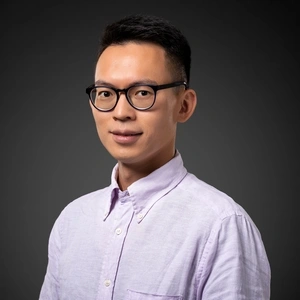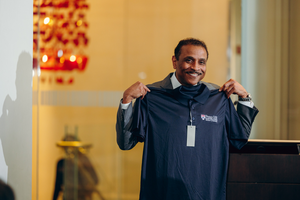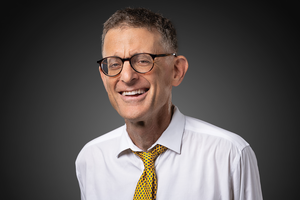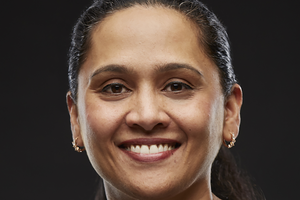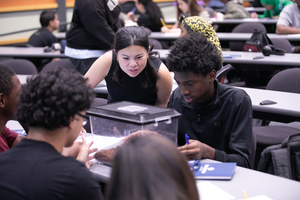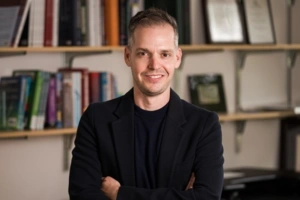Faculty Expert
How do you teach people to create knowledge instead of just passively absorbing it? How do you make creative thinking a part of culture? How can educational technology help? How do you assess collaborative teamwork by students? Penn GSE Associate Professor Bodong Chen is leading a new research program to answer these questions and develop creative thinkers who can thrive in today’s knowledge economy.
Chen, a learning scientist and educational technologist, recently joined Penn GSE’s Teaching, Learning, and Leadership division, which is renowned for its learning science work. He builds innovative learning technologies, learning analytics, and organizational infrastructure for schools and universities. Working across continents, he develops new tools to enable engaged and participatory learning.
Part of his research examines the nature of learning for K-12 students. His goal is to teach kids to act more like knowledge workers, taking ownership of what they study, asking ever better questions, and figuring out ways to collect and analyze data to discover answers for themselves. To do that, kids need computers and apps, and teachers need the skills to use computers effectively and creatively as a teaching tool. Hopefully, the result is that kids learn to recognize promising ideas and work in teams to solve problems as they arise. According to Chen, knowledge building is what most professions demand. With the right tools, Chen’s interventions would help students become capable knowledge builders. But how would you know if they were?
"For me as an educator, when I think about tests, I think they're important benchmarks,” Chen muses. But most tests do not assess a person’s ability to create knowledge. He is trying to design learning analytics that capture collaboration, creativity, and engagement, because “50% of the jobs in the future do not exist right now, but when students graduate, they are going to get into those new professions.” And employers want people with those skills that are rarely tested in education but are essential for knowledge building.
Chen takes advantage of the data digital learning products provide. He uses statistics and data mining to find patterns in student work. For example, using natural language processing (NLP) to study student communications yielded insights into the quality of questions asked about authentic problems. NLP also helped his team to measure how culturally relevant math teaching materials were for students. Chen concedes that measuring collaboration, creativity, and other skills for the knowledge workforce is hard, saying that it “depends on innovations on the data piece, right? How we use data to think about new measures that are theoretically grounded, statistically validated, and also actionable. But we're trying to work on that within our team to think about what's possible.” It’s even harder to properly situate intelligence powered by data to help us reimagine learning and education.
To Chen, an exciting vision of education is to engage everyone in creating new knowledge that matters for them and society. He says, “As a collective we can be creative, but it's not necessary to ask every individual person to be a creative genius.” Instead, he sets up the dynamics for students to collaborate. "We bring students together, and think about them as experts, and they can become very knowledgeable and creative in this area without really thinking.” The result is that “collectively, they're making some progress towards new knowledge.”
One example of how Chen promotes student collaboration through technology is with digital “sticky notes” students use to share and build on each other’s ideas. There are student-facing dashboards that support student reflection and self-regulation in online discussions. Chen can measure simple things such as how often each student puts up a note and more complex things such as students’ shared attention and rotating leadership as the discussion unfolds. He can analyze the language used in the notes and determine whether ideas become more sophisticated over time. The system offers an avenue for exploring new ideas or discussing conflicting views. In one particular project, students generate and collect data, connecting the science—say of energy consumption—to major policy debates—like the Green New Deal. Students stretch learning towards building solutions to societal problems.
Besides developing new classroom tools for K-16, Chen came to Penn “to use data that are generated in the learning and educational processes in a way that offers feedback mechanisms for different people to act on educational data.” Beyond assessing individual students, groups of students, or classes, data analyses could inform leaders “at the level of a district or state.” For one project, Chen and his colleagues compared how the instructional teaching materials and teachers "aligned with the students’ demographics in terms of cultural relevance” using records from large-scale information systems.
"Another exciting thing for me coming to Penn is the global reach,” says Chen, who has experienced education in rural China, Beijing, Toronto, Minneapolis, and now Philadelphia. “I think Penn offers a great platform for that. Right away I started to think about how we can put together a global network for knowledge building. I'm trying to start something that leverages what Penn has in terms of the professional learning center and so on. We recently applied for a grant to start what we call the Innovation Network for Knowledge Building.” The idea is to go beyond conferences and “bring together mainland China, Taiwan, Singapore, Canada and the U.S.” to build larger infrastructures for knowledge building.
Chen hopes that if students everywhere have experience building knowledge in K-12 and in college, “then when they are asked to take ownership of a product or a project, they will know how to really work with people to deliver on that.”
